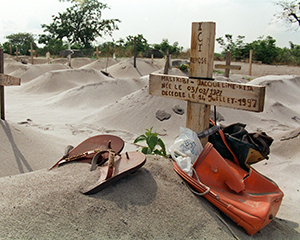Conflict trajectories show how the extent of lethal violence develops over time. The more systematically research determines the trajectories of armed conflicts and the more precisely it understands how the respective trajectories come about, the better it can assess the further development of current conflicts. In PRIF Report 15/2022 (in German), Thorsten Gromes maps the courses of 125 intra-state conflicts that began after 1989 and ended by December 2020. Here, the respective trajectory results from the ups and downs of lethal violence over the total duration of the conflict.
What stands out in particular is the fact that every second conflict has a one-off peak in violence exceeding the average death rate several times over. Almost every third conflict is characterized by a wave-like progression. The insights gained into the course of conflicts can be used to inform efforts on how these conflicts can be contained or ended.
